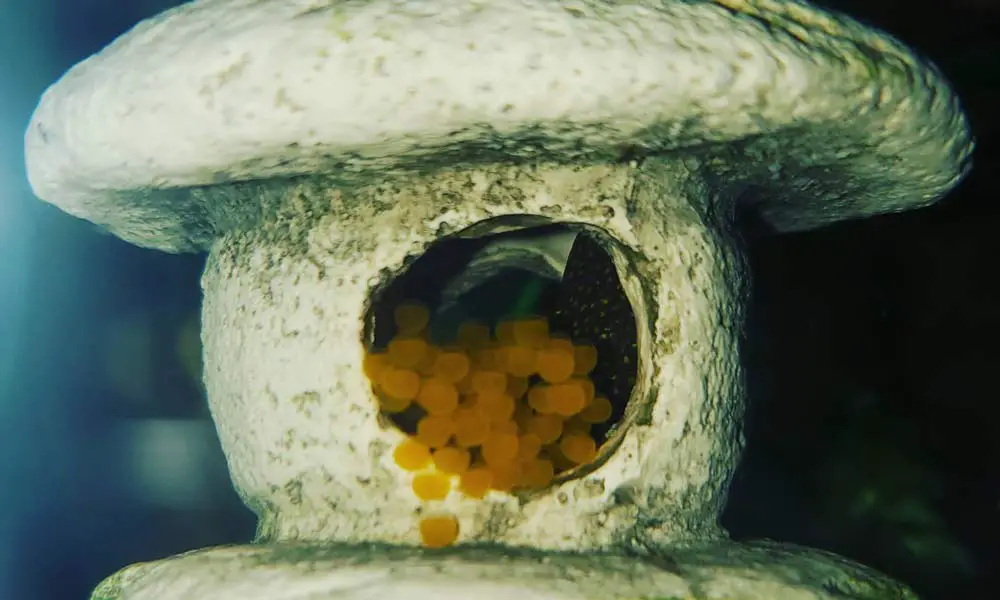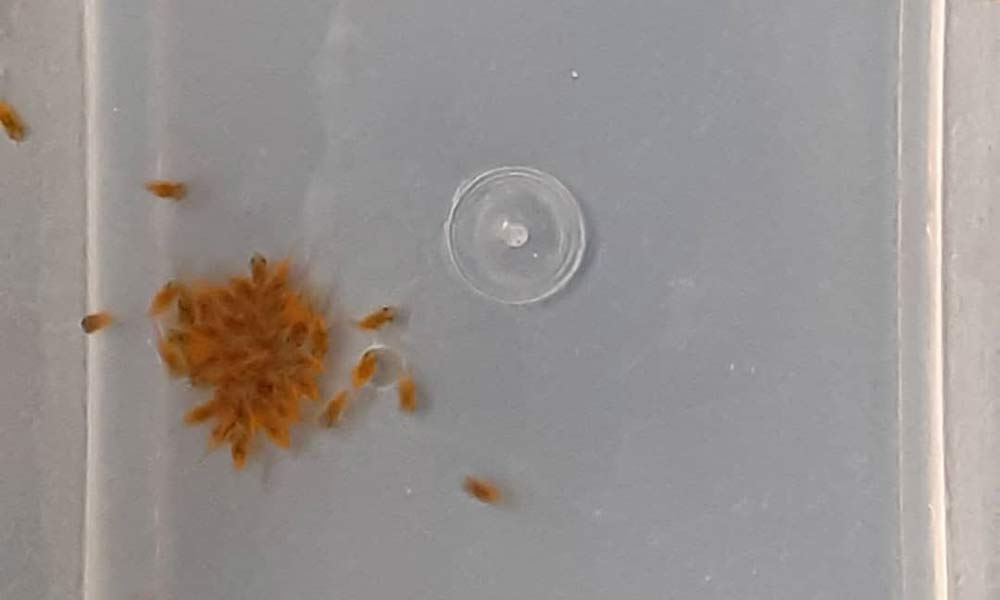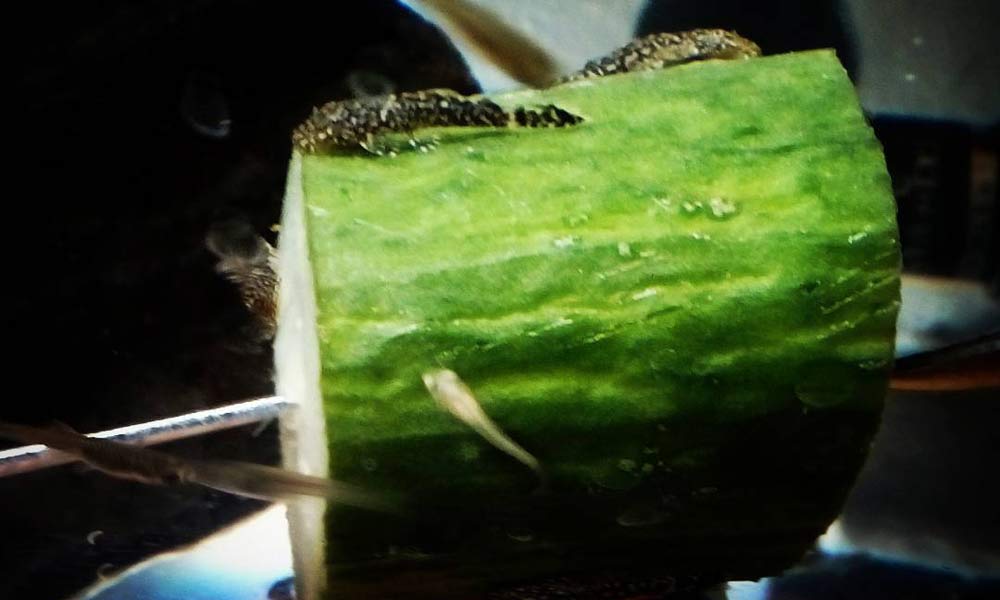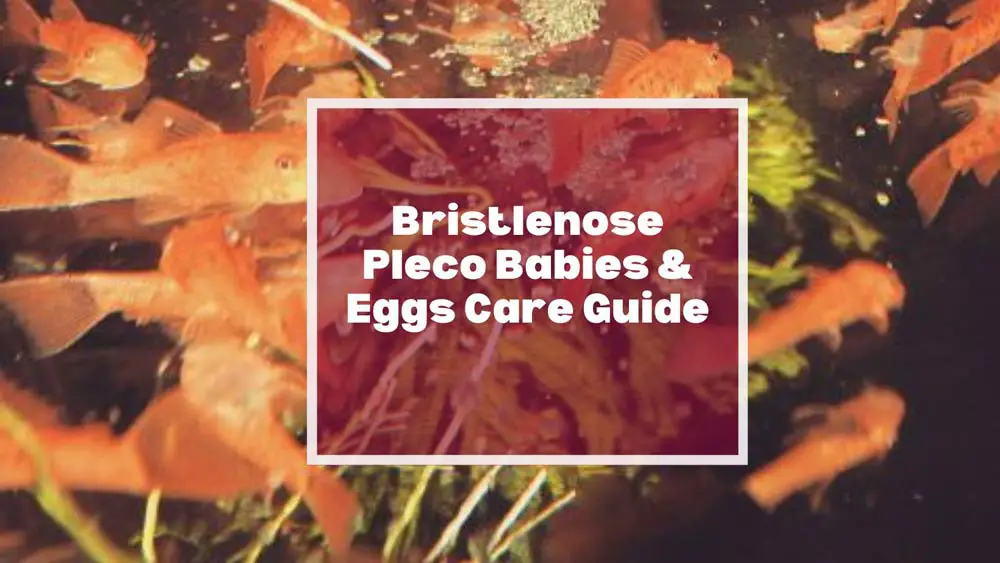Now that you already know how to sex and breed bristle nose pleco, it’s time to get down to the nitty-gritty and learn how to care for your baby bristlenose pleco.
Bristlenose Plecos are prolific, but the survival rate of eggs is still quite low, even in captivity. Very rarely have I seen more than 10 out of over 100 eggs survive. This number can be lower for new young males since they frequently fan the eggs out of the cave and never carry them back.
Though raising the eggs and fry from occasional breeding in your tank is a common and often easy task, there is still a risk of eggs/fry not surviving if a couple of issues are addressed.
That’s why we put together this baby bristle nose pleco care guide, so you can help your breeding pairs consistently reproduce with a maximum yield of fry that will grow into healthy and happy adults with little to no losses.
Bristlenose Pleco Eggs

A good shape single pair of Bristlenose Pleco in an optimal breeding environment does lay 150 -200 eggs at a time. In most cases, the Bushy Nose pleco is only supposed to breed in enclosed caves or tubes, but a few owners report that their Bristlenose plecos have laid eggs on leaves and glass.
As we discussed in the step-by-step breeding guide, once the eggs are in place, the male will solely guard and take care of the eggs seriously.
To ensure a high survival rate, you will need to watch them closely so that you can intervene if necessary, especially for new males.
How to Take Care of Bristlenose Pleco Eggs?
Monitoring what time are eggs laid and when the eggs will begin to hatch is crucial to help you understand when to expect Bristlenose plecos babies in your tank. Sometimes, the male will create a seal in the cave, so you even can’t see eggs or fry until they leave the cave.
If you intend to breed for profit and have more than one pair or other ornamental fish, you might consider they won’t bother the eggs or fry.
The most important part of your job is collecting these eggs that are knocked out of the cave, as we mentioned earlier, and placing them in a separate tank for hatching and raising. Do this as quickly as possible, or they will likely not survive.
These eggs can be hatched in the same way by fanning them with an air stone in an egg tumbler or even a plastic tub with identical water parameters.
[amazon box=”B089MDJB8D”]Author note: Strong bubble stream can disrupt the eggs. Just keep the water evenly and gently flowing around them.
Baby Bristlenose Pleco
These large, orange-colored eggs will hatch in 4-5 days, and the fry will stay in the cave under the protection of the male for a few days until their yolk sacs are absorbed. The male is very protective of his young, and you may notice he will even push back the fry that try to leave the cave. Once the fry are free-swimming, they will venture out of the cave in search of food.
At this point, you may praise the male for a job well done, but your real work starts now.
In fact, only a few fry will survive after they leave the cave if you just leave them in the breeding tank. One theory behind the high fry mortality rate is that they don’t get enough plant-based materials.
To increase baby bristlenose pleco survival chances, you should take them out of the breeding tank within two days after they hatch and put them into a plastic tub or, even better – a separate planted fry rearing tank with similar water parameters. This way, they can be monitored closely and fed more frequently.
While removing the babies or eggs from the cave makes the male’s worst day; this is a necessary step to ensure baby Bristlenose pleco’s health and safety.
In order to prevent the male bristlenose pleco scatters the eggs or fry in the environment when startled, you’d better quickly move the whole cave, with fry, eggs, and the male inside, to a plastic tub filled with 2-3 inches of water from the breeding tank.
Of course, the male will move around, and it’s hard to put him out of the cave. You can rock the tub back and forth to fill the cave with water so that the eggs or fry will be forced out. Repeat the process until you collect most of them.
For the collected eggs or fry, either you can still put them in the tub or place them in a separate fry tank. I recommended you leave a few of them in the cave for the male to take care of. Then you will need to put the cave back into the tank at the same spot.
This is a very delicate process, and you must be careful not to damage the cave or the eggs/fry inside.
How to Take Care of Bristlenose Pleco Babies?

In their first few weeks, the baby Bristlenose Pleco will group together against a flat surface, whether a glass wall or a cave. They mostly feed off the yolk sacs. Performing 30-50% water changes at least twice a day is very important as they breathe and produce waste just like adults. You should also run the airstone 24/7 at the proper amount except for feeding times.
After a week, they are old enough and begin to swim around looking for food. Start to feed them baby brine shrimp. As you can see, the fry are too small (about 3 to 4 mm long) to crawl over the shrimp. So, you need to help them easily access the baby brine shrimp.
To do that, simply rinse the BBS and freeze them with cups of tank water in the ice cube tray. You can just pop out a baby brine shrimp ‘cube’ and place it near the fry when feeding. The baby Bristlenose Pleco will be able to sense the smell of food and swim towards it.
Feed them twice a day. Because these “cubes” can melt quickly and deteriorate the water quality, each feeding followed by a 50%water change is recommended.
After feeding BBS a week, you can start to wean them onto vegetables. As always, chopped green beans and zucchini are the favorites. Make sure that you remove the uneaten food after 12 hours to prevent your tank from becoming a mess.

The quicker you can get them onto a vegetarian diet, the quicker you can move them into their own tank since their daily diet requirements can be achieved without much work.
If you put the fry in a separate rearing tank, you should put a piece of driftwood in there. Driftwood can provide a hiding place for baby Bristlenose Pleco and help algae to grow on it as their food source.
Bristlenose Pleco babies grow quickly. You will see that they can reach about 2 inches within 3 to 4 months if you provide them with good conditions.
Conclusion
So, there you have it! Our complete bristle nose pleco baby/eggs care guide. By following these simple tips and guidelines, you can help your breeding pairs consistently reproduce with a maximum yield of fry that will grow into healthy and happy adults with little to no losses.
And if you have any questions or concerns about caring for your baby bristlenose plecos, don’t hesitate to reach out to us – we’re always here to help.
